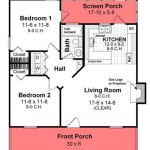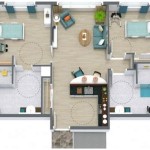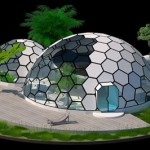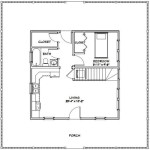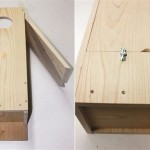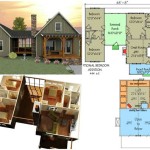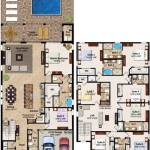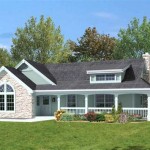House plans with courtyards are architectural designs that incorporate an enclosed or semi-enclosed outdoor space within the confines of a home. These courtyards serve as private oases, offering homeowners a sanctuary for relaxation, entertainment, and connection with nature. In traditional Spanish and Mediterranean architecture, courtyards have been a staple for centuries, providing respite from the hot sun and promoting ventilation throughout the home.
In contemporary architecture, house plans with courtyards offer a wealth of benefits. They can increase natural light, provide additional living space, and enhance privacy while connecting indoor and outdoor areas seamlessly. Whether it’s a cozy urban retreat or a sprawling suburban oasis, a well-designed courtyard can transform a house into a haven.
As we delve into the main body of this article, we will explore the various types of house plans with courtyards, their advantages, and the design considerations that go into creating these beautiful and functional outdoor spaces.
Key considerations for house plans with courtyards include:
- Privacy and security
- Orientation and sunlight
- Water and drainage
- Landscaping and hardscaping
- Access and flow
- Style and aesthetics
- Cost and maintenance
- Building codes and regulations
- Sustainability and energy efficiency
By carefully considering these factors, homeowners can create beautiful and functional courtyards that enhance the overall enjoyment and value of their homes.
Privacy and security
Privacy and security are key considerations for any homeowner, and house plans with courtyards require careful attention to these aspects. Courtyards, by their nature, are enclosed or semi-enclosed spaces, which can provide a sense of privacy and seclusion. However, it’s important to consider the following points to ensure that your courtyard remains a safe and private haven.
- Wall height and fencing: The height and design of the walls or fencing surrounding your courtyard will impact both privacy and security. Higher walls and solid fencing provide more privacy but can also make the space feel enclosed. Consider using a combination of materials, such as a low wall with decorative ironwork or lattice, to balance privacy with openness.
- Landscaping: Strategic landscaping can enhance privacy and security. Plant tall shrubs or trees around the perimeter of the courtyard to create a natural barrier. Avoid planting trees or shrubs that shed leaves or debris, as these can create maintenance issues.
- Lighting: Good lighting is essential for both safety and security. Install motion-activated lights around the courtyard to deter intruders and ensure visibility at night. Additionally, consider installing security cameras or an alarm system for added peace of mind.
- Access points: Control access to your courtyard by limiting the number of entry points. Consider installing a gate or door that can be locked when necessary. Additionally, ensure that any windows or doors facing the courtyard are fitted with secure locks.
By implementing these measures, homeowners can create a private and secure courtyard that provides a sanctuary for relaxation and enjoyment.
Orientation and sunlight
The orientation of your house plan with a courtyard plays a crucial role in maximizing sunlight and creating a comfortable outdoor space. Here are key points to consider:
- North-facing courtyards: In the Northern Hemisphere, north-facing courtyards receive less direct sunlight, making them ideal for warmer climates. They provide a shady and cooler retreat during the summer months. However, in colder climates, north-facing courtyards may not receive enough sunlight to be fully utilized.
- South-facing courtyards: South-facing courtyards receive the most direct sunlight in the Northern Hemisphere. They are ideal for maximizing warmth and sunlight, especially in colder climates. However, in hot climates, south-facing courtyards may require additional shading to prevent the space from becoming uncomfortably hot.
- East-facing courtyards: East-facing courtyards receive morning sunlight, providing a bright and inviting space for breakfast or coffee. In hot climates, east-facing courtyards can benefit from afternoon shade to prevent overheating.
- West-facing courtyards: West-facing courtyards receive afternoon and evening sunlight, making them ideal for relaxing and entertaining outdoors. In colder climates, west-facing courtyards can help to extend the warmth of the day into the evening. However, in hot climates, west-facing courtyards may require additional shading to prevent the space from becoming too hot in the late afternoon and evening.
By carefully considering the orientation of your courtyard, you can create an outdoor space that is both comfortable and enjoyable throughout the day and seasons.
Water and drainage
Water and drainage are critical considerations for house plans with courtyards. Proper water management ensures that your courtyard remains a functional and enjoyable space, free from water damage and flooding.
First, consider the source of water for your courtyard. If you plan to have a water feature, such as a fountain or pond, you will need to ensure that there is an adequate water supply and drainage system in place. Additionally, if your courtyard is located in an area that receives significant rainfall, you will need to install a drainage system to prevent water from accumulating and causing damage.
The type of drainage system you choose will depend on the size and layout of your courtyard, as well as the local climate and soil conditions. Common drainage systems for courtyards include French drains, dry wells, and sump pumps. French drains are trenches filled with gravel or perforated pipe that collect and redirect water away from the courtyard. Dry wells are underground chambers that collect and store water, allowing it to gradually seep into the ground. Sump pumps are used to remove water from low-lying areas and pump it to a higher elevation.
In addition to installing a drainage system, it is also important to consider the slope of your courtyard. The courtyard should be sloped away from buildings and any other structures to prevent water from accumulating and causing damage. You may also want to consider installing a rain garden or other water-wise landscaping features to help absorb and retain rainwater.
By carefully considering water and drainage, you can create a beautiful and functional courtyard that can be enjoyed for years to come.
Landscaping and hardscaping
Landscaping and hardscaping are essential elements of house plans with courtyards. Careful consideration of both can enhance the beauty, functionality, and enjoyment of your outdoor space.
- Plant selection: When selecting plants for your courtyard, consider factors such as sunlight exposure, water requirements, and mature size. Choose plants that are well-suited to the local climate and will thrive in the courtyard’s environment. Evergreen plants can provide year-round greenery and privacy, while flowering plants can add a splash of color and attract pollinators. Consider using a variety of plant sizes and textures to create visual interest.
- hardscaping materials: Hardscaping refers to the non-living elements of your courtyard, such as paving, walls, and outdoor structures. Choose materials that are durable, low-maintenance, and aesthetically pleasing. Natural stone, concrete pavers, and brick are all popular choices for courtyard hardscaping. Consider using a combination of materials to create a unique and inviting space.
- Focal points: A focal point is an element that draws the eye and creates a sense of interest in the courtyard. This could be a water feature, a piece of sculpture, or a beautiful tree. Focal points can help to define the space and create a sense of balance and harmony.
- Lighting: Good lighting is essential for creating a safe and inviting courtyard that can be enjoyed day and night. Consider using a combination of natural light and artificial lighting to illuminate your courtyard effectively. Path lighting can help to guide guests safely through the space, while accent lighting can highlight architectural features or plants.
By carefully considering landscaping and hardscaping, you can create a beautiful and functional courtyard that will be a joy to use for years to come.
Access and flow
Access and flow are important considerations for house plans with courtyards. The courtyard should be easily accessible from the main living areas of the house, and the flow of traffic through the courtyard should be smooth and efficient. This will help to ensure that the courtyard is fully utilized and enjoyed by the homeowners.
When planning the access to the courtyard, consider the following factors:
- Location of the courtyard: The courtyard should be located in a convenient and central location within the house. It should be easy to get to from the main living areas, such as the living room, kitchen, and dining room.
- Number of access points: There should be multiple access points to the courtyard to allow for easy flow of traffic. This is especially important if the courtyard is large or if it is used for entertaining.
- Width of access points: The access points to the courtyard should be wide enough to allow for comfortable passage of people and furniture. A minimum width of 3 feet is recommended.
- Thresholds: If there are any thresholds between the house and the courtyard, they should be kept low to minimize tripping hazards.
In addition to the access points, the flow of traffic through the courtyard should also be considered. The courtyard should be designed in a way that encourages people to use the space and move around easily. This can be achieved by creating clear pathways and avoiding obstacles. The use of furniture and other elements can also be used to define the flow of traffic and create a more inviting space.
By carefully considering access and flow, you can create a courtyard that is both functional and enjoyable. The courtyard should be easy to get to and move around in, and it should encourage people to use the space for relaxation, entertaining, and other activities.
In addition to the points discussed above, here are some other tips for creating a courtyard with good access and flow:
- Use a variety of paving materials to create different pathways and areas within the courtyard.
- Place furniture and other elements strategically to create a sense of flow and to encourage people to use the space.
- Consider the use of lighting to highlight pathways and create a more inviting atmosphere at night.
Style and aesthetics
The style and aesthetics of your courtyard should complement the overall design of your house and your personal preferences. There are many different styles to choose from, including traditional, contemporary, Mediterranean, and Asian. Consider the following factors when choosing a style for your courtyard:
- Architectural style of your house: The style of your courtyard should complement the architectural style of your house. For example, a traditional house would be well-suited to a courtyard with a classic design, while a contemporary house might have a more modern courtyard with clean lines and simple materials.
- Personal preferences: Ultimately, the style of your courtyard should reflect your own personal preferences. Choose a style that you find appealing and that suits your lifestyle. If you enjoy entertaining, you might want a courtyard with a large patio and outdoor kitchen. If you prefer a more private and relaxing space, you might opt for a courtyard with a cozy seating area and a water feature.
Once you have chosen a style for your courtyard, you can start to think about the specific aesthetic elements. These elements include:
- Color: The color scheme of your courtyard should be cohesive with the overall design of your house and the surrounding landscape. Choose colors that you find appealing and that create the desired atmosphere. For example, light colors can make a courtyard feel more spacious and airy, while dark colors can create a more intimate and cozy space.
- Materials: The materials you choose for your courtyard should be durable, low-maintenance, and aesthetically pleasing. Popular choices for courtyard materials include natural stone, concrete pavers, and brick. You can also use a combination of materials to create a unique and stylish look.
- Landscaping: The landscaping of your courtyard should complement the overall design and style of the space. Choose plants that are well-suited to the local climate and that will thrive in the courtyard’s environment. You can also use landscaping to create privacy, shade, and interest.
- Accessories: Accessories can add personality and style to your courtyard. Choose accessories that reflect your personal taste and that complement the overall design of the space. For example, you might add a fountain, a piece of sculpture, or a few colorful pots of flowers.
By carefully considering the style and aesthetics of your courtyard, you can create a beautiful and inviting outdoor space that you will enjoy for years to come. The courtyard should be a reflection of your personal style and should complement the overall design of your house.
Here are some additional tips for creating a stylish and aesthetically pleasing courtyard:
- Use a variety of materials and textures to create visual interest.
- Incorporate plants and other natural elements to create a sense of peace and tranquility.
- Add personal touches, such as artwork or furniture, to make the space your own.
- Consider the use of lighting to create a warm and inviting atmosphere at night.
With careful planning and attention to detail, you can create a courtyard that is both beautiful and functional. The courtyard should be a space that you enjoy spending time in and that reflects your personal style.
Cost and maintenance
The cost of building a house plan with a courtyard will vary depending on a number of factors, including the size of the courtyard, the materials used, and the complexity of the design. However, as a general rule of thumb, you can expect to pay more for a courtyard house than a house without a courtyard. This is because courtyards require additional materials and labor to construct.
In addition to the initial cost of construction, courtyards also require ongoing maintenance. This includes regular cleaning, sweeping, and repairs. The cost of maintenance will vary depending on the size of the courtyard and the materials used. However, you can expect to pay several hundred dollars per year to maintain a courtyard.
If you are considering adding a courtyard to your home, it is important to factor in the cost of construction and maintenance. However, courtyards can also add value to your home. A well-designed courtyard can increase your home’s curb appeal and make it more enjoyable to live in. If you are willing to invest in the upfront cost and ongoing maintenance, a courtyard can be a great addition to your home.
Here are some tips for saving money on the cost of building and maintaining a courtyard:
- Choose low-maintenance materials. Natural stone and concrete pavers are more expensive than brick or gravel, but they require less maintenance in the long run.
- Keep the courtyard small. The larger the courtyard, the more it will cost to build and maintain.
- Use plants that are native to your area. Native plants are more likely to thrive in your climate and require less water and fertilizer.
- Do some of the maintenance yourself. Regular cleaning and sweeping can be done by the homeowner, which can save money on maintenance costs.
By following these tips, you can save money on the cost of building and maintaining a courtyard. Courtyards can be a beautiful and valuable addition to your home, but it is important to be aware of the costs involved before you begin construction.
Building codes and regulations
Building codes and regulations are an important consideration for any construction project, including house plans with courtyards. Building codes are laws that govern the construction of buildings and other structures. These codes are in place to ensure the safety and habitability of buildings, and to protect the public health and welfare.
Building codes and regulations vary from place to place. In the United States, building codes are typically developed by local governments and enforced by building inspectors. Building codes typically cover a wide range of topics, including structural requirements, fire safety, and accessibility. Courtyards are often subject to specific building codes and regulations. These codes may govern the size, location, and construction of courtyards. For example, building codes may require that courtyards be a certain minimum size and that they be enclosed by walls or fences. Building codes may also require that courtyards have proper drainage and lighting.
It is important to check with your local building department to determine the specific building codes and regulations that apply to your project. Building inspectors can also provide guidance on how to comply with the codes. Failure to comply with building codes can result in delays or even the rejection of your building permit. In some cases, non-compliance with building codes can also lead to fines or other penalties.
In addition to building codes, there may also be other regulations that apply to courtyards. For example, some homeowners associations (HOAs) have rules and regulations that govern the appearance and use of courtyards. HOAs may have restrictions on the size, location, and materials used in the construction of courtyards. They may also have rules about what activities are allowed in courtyards. It is important to check with your HOA to determine if there are any regulations that apply to courtyards before you begin construction.
By following building codes and regulations, you can ensure that your courtyard is safe and habitable. Building codes and regulations are in place to protect the public health and welfare, and they should be taken seriously. If you have any questions about building codes or regulations, be sure to contact your local building department.
Sustainability and energy efficiency
Sustainability and energy efficiency are important considerations for any home, and house plans with courtyards offer a number of opportunities to incorporate sustainable and energy-efficient features. One of the most important aspects of sustainability is reducing energy consumption. Courtyards can help to reduce energy consumption by providing natural light and ventilation. Natural light can reduce the need for artificial lighting, and ventilation can help to cool the home in the summer months, reducing the need for air conditioning. Courtyards can also be used to collect rainwater, which can be used for irrigation or other purposes, reducing the demand for municipal water.
Another important aspect of sustainability is using sustainable materials and construction methods. Courtyards can be constructed using a variety of sustainable materials, such as recycled materials, low-VOC (volatile organic compound) materials, and renewable materials. Sustainable construction methods, such as passive solar design and green building techniques, can also be used to reduce the environmental impact of a courtyard. Passive solar design involves orienting the courtyard to maximize solar gain in the winter and minimize solar gain in the summer. Green building techniques, such as using energy-efficient appliances and fixtures, can also help to reduce the environmental impact of a courtyard.
Courtyards can also be used to create microclimates that are more comfortable and energy-efficient. By planting trees and shrubs in the courtyard, you can create shade and reduce the amount of heat that is absorbed by the building. This can help to keep the home cooler in the summer months, reducing the need for air conditioning. Courtyards can also be used to create windbreaks, which can help to reduce the amount of heat that is lost from the home in the winter months, reducing the need for heating.
By incorporating sustainable and energy-efficient features into your courtyard design, you can create a more comfortable and environmentally friendly home. Courtyards can help to reduce energy consumption, use sustainable materials and construction methods, and create microclimates that are more comfortable and energy-efficient. As a result, courtyards can be a valuable addition to any sustainable home.
Here are some additional tips for creating a sustainable and energy-efficient courtyard:
- Use native plants in your courtyard. Native plants are adapted to the local climate and require less water and fertilizer than non-native plants.
- Install a rain barrel to collect rainwater for irrigation. Rainwater is free, and it is better for the environment than using municipal water.
- Use energy-efficient lighting in your courtyard. LED lights are more energy-efficient than traditional incandescent lights.
- Consider installing a solar panel system to generate electricity for your home. Solar panels can help to reduce your energy bills and your carbon footprint.










Related Posts

